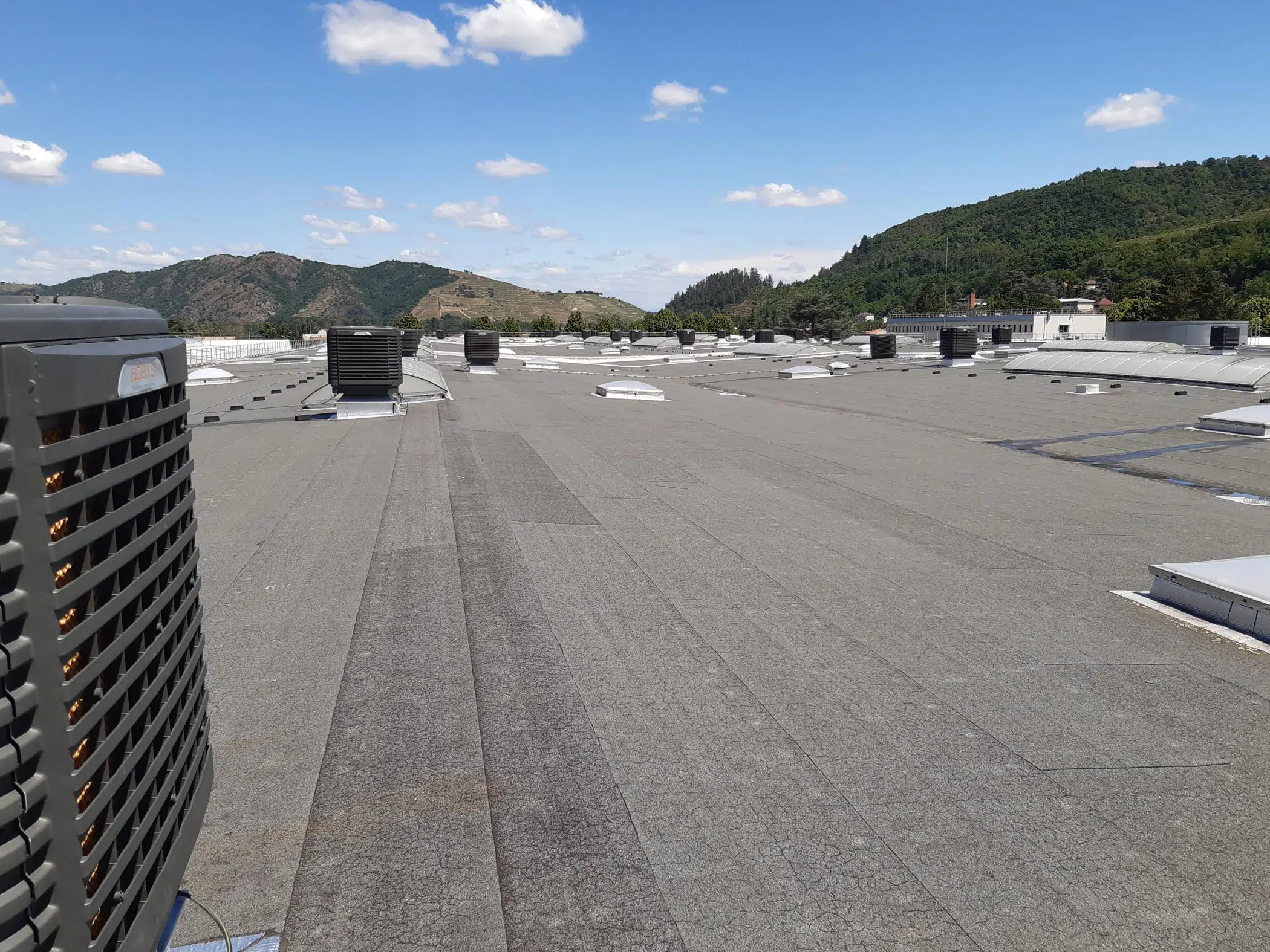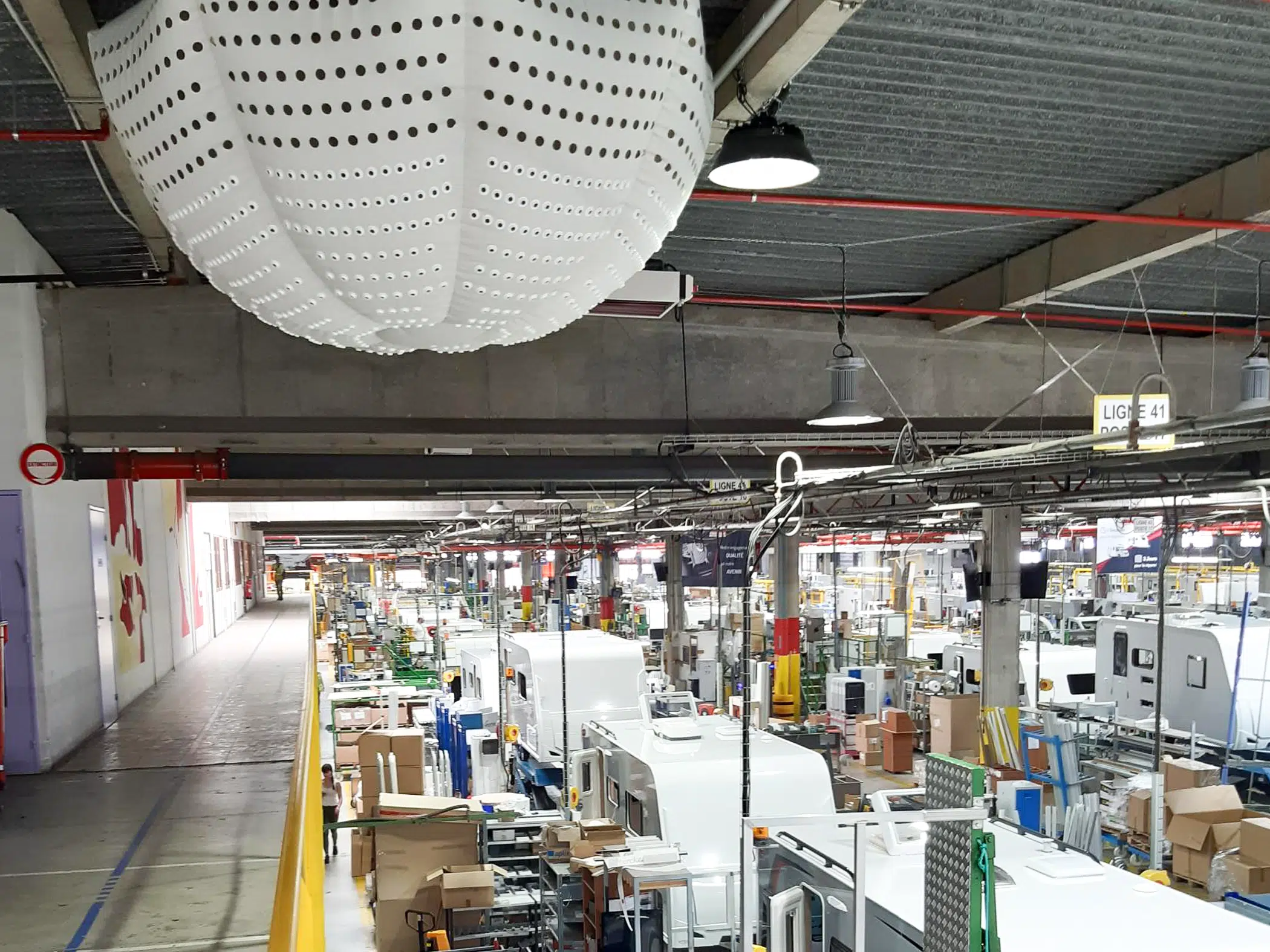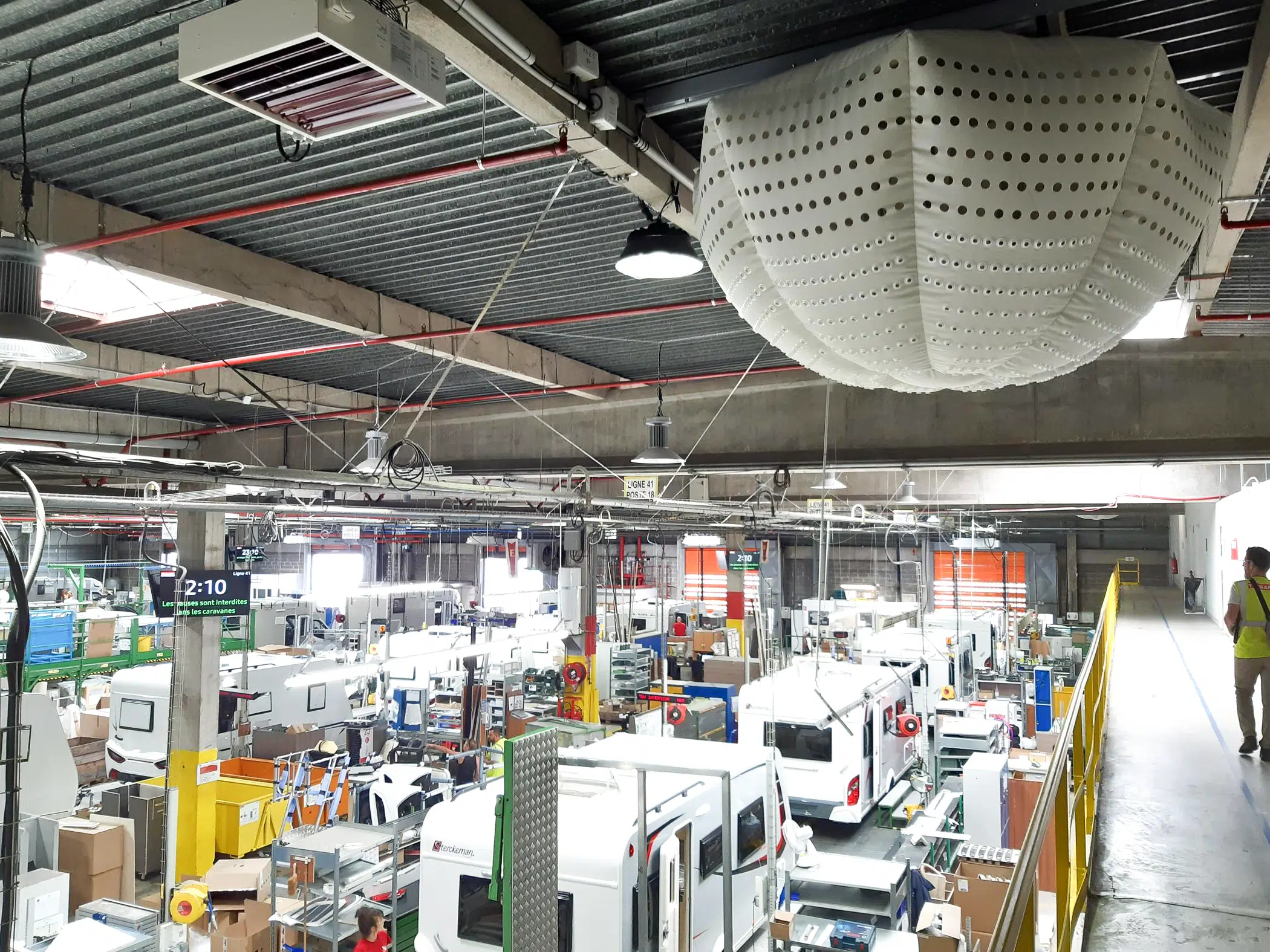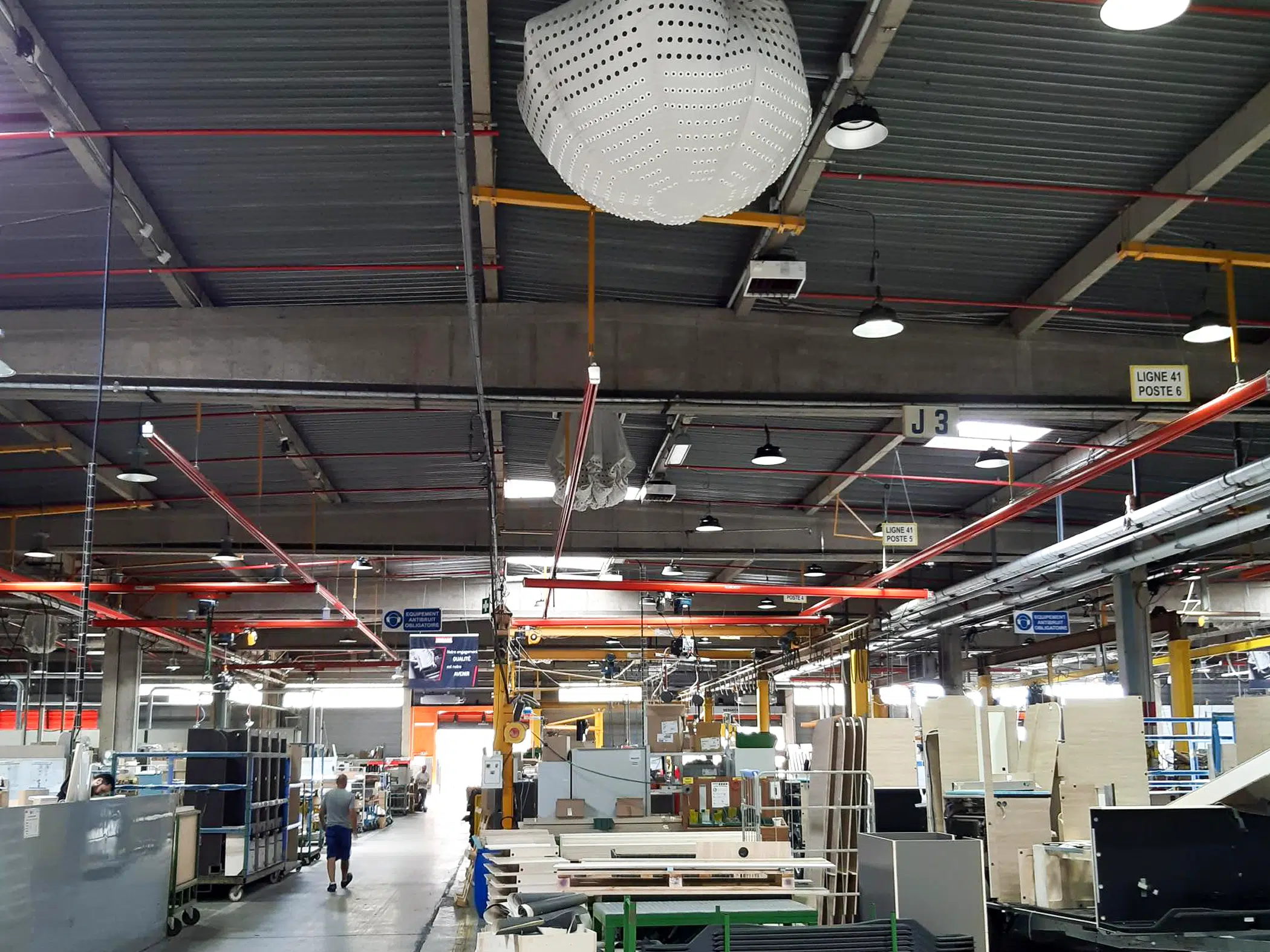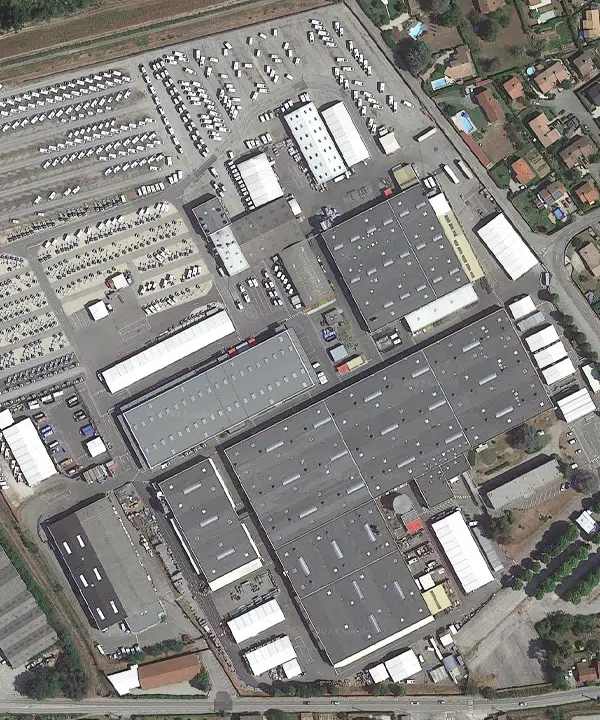
Aerial view of the Trigano site – Tournon-sur-Rhône

How can we meet the challenges of excessive heat?
Our adiabatic cooling case study concerns an 18,000 m² industrial building in Tournon-sur-Rhône, Ardèche. Specializing in the manufacture of leisure vehicles, caravans and motor homes, it is Europe’s largest production unit (13,000 vehicles assembled per year).
The customer was facing major challenges, not least excessive heat, which was compromising productivity and presenting a potential risk of production line stoppage. Previously considered solutions were proving to be either excessively costly, or unsuited to their specific needs. In addition, working with open doors was imperative due to the constant flow of goods, making the installation of a conventional air-conditioning system impossible.
Proposed solution
The customer was therefore looking for an efficient solution that would not only be economical to invest in, but also to operate. It was also crucial not to disrupt the existing smoke extraction system, and to minimize production interruptions during the installation of the new cooling solution. Finally, the customer expressed the need to be able to integrate and control the coolers from their existing Building Management System (BMS).
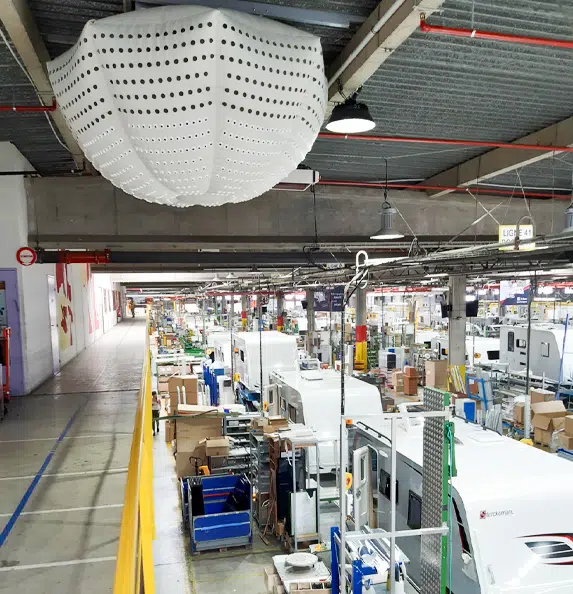
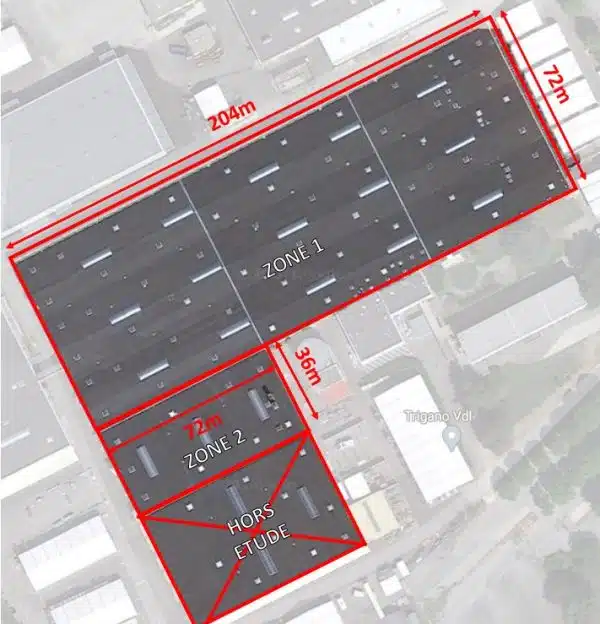

Study
The following points are considered for this study:
- The zones to be cooled represent:
→ Zone 1: 14,688 m² by 6 m height
→ Zone 2: 2,592 m² by 6 m height
- Desired ambient air temperature of 27°C in summer, when the building is occupied, in the middle of the day.
- There are a number of obstacles to be taken into account when installing coolers, including sprinklers and lighting fixtures. However, it is considered feasible to install ducts and diffusion at around 5 m above ground level.
Simulation
As part of this study, and in order to size the installation, we simulate the cooling of the building during the summer period:
| Scenario 1 | |
| Air entering the cooler | |
| Temperature | 37° |
| Relative humidity | 23% |
| Supply air temperature calculation | |
| Supply temperature | 23,7°C |
| Supply air relative humidity | 78% |
| Estimating ambient conditions | |
| Desired room temperature | 27°C |
| Estimation stratification thermique | 6°C |
| Estimation of ambient relative humidity | 58% |
| Scenario 2 | |
| Air entering the cooler | |
| Temperature | 30° |
| Relative humidity | 33% |
| Supply air temperature calculation | |
| Supply temperature | 22,7°C |
| Supply air relative humidity | 68% |
| Estimating ambient conditions | |
| Desired room temperature | 26°C |
| Estimation stratification thermique | 5°C |
| Estimation of ambient relative humidity | 57% |
Air diffusion and exhaust
In order to cover the entire surface area, we opted for a half-sphere textile diffusion system. These diffusers are made up of long throw nozzles, so that the air velocity at occupant level contributes to lowering the perceived temperature.
Air extraction is mandatory to ensure indoor air quality and regulate ambient humidity levels. Extractors can be assimilated to any roof or facade opening system used to evacuate air entering the premises via freshers. Where possible, it is advisable to install these vents as far away as possible from the area to be cooled, in order to create a homogeneous and efficient flow of fresh air over as large a volume as possible.
Control
Each zone is independently controlled by a two-speed manual override, allowing the user to adjust the airflow rate. Optional peripherals such as temperature sensors (indoor and outdoor) and a humidity sensor complete the system.
Result after work
36 Wetbox WFP 30,000 coolers were recommended for this project to achieve the thermal comfort required by the customer.
According to simulations, they can remove around 2,700 kW of heat in summer. Finally, for the entire installation, the installed electrical power is 108 kW for a water consumption of around 4.3 m3/h.
The customer is fully satisfied with the adiabatic cooling solution installed. Productivity has increased, and recruitment has been simplified. Operators can now work in more comfortable conditions, even in very hot weather.
As stated in the project requirements, production was not disrupted when the coolers were installed, as this was done directly from the roof.

